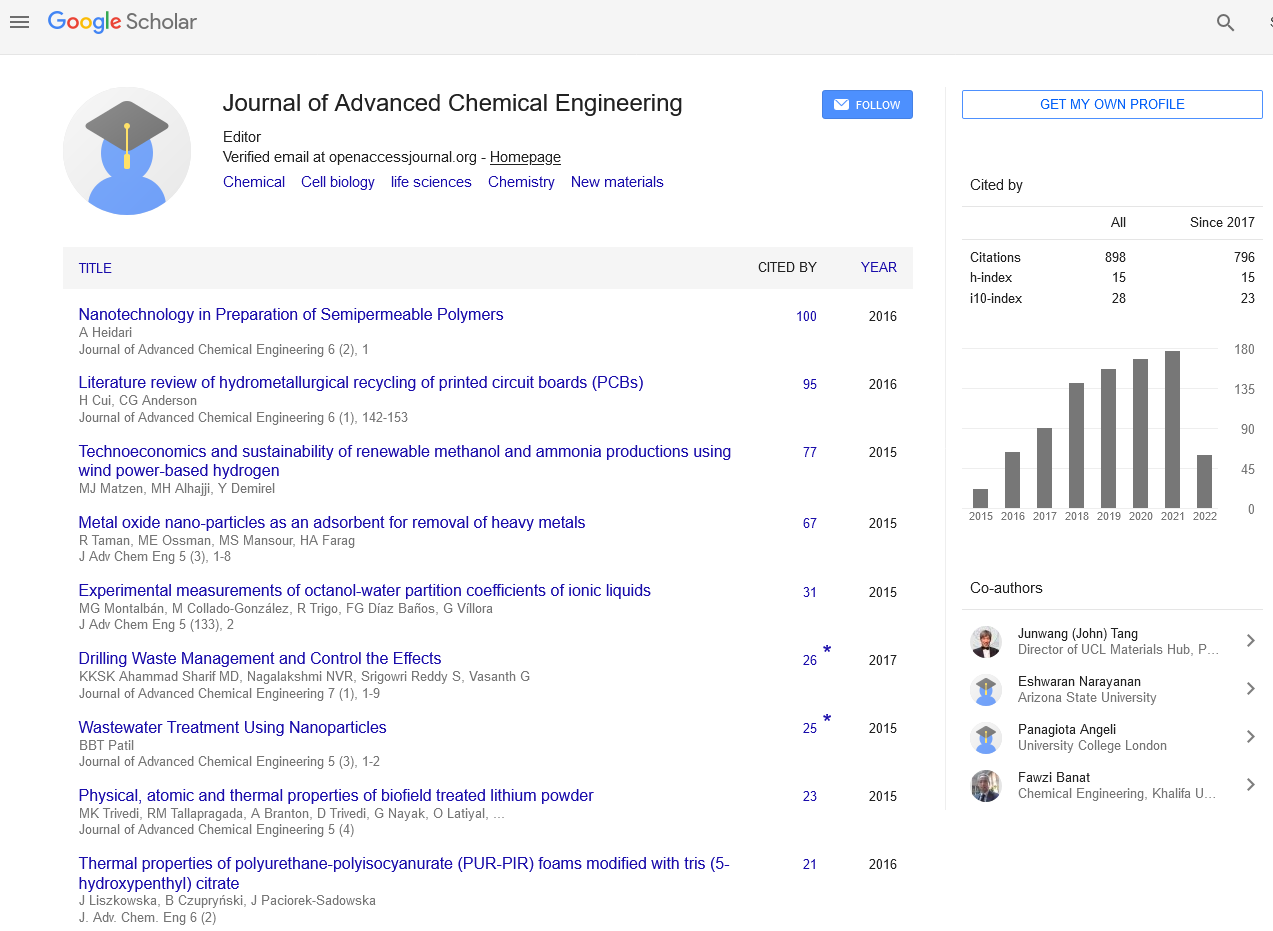Indexed In
- Open J Gate
- Genamics JournalSeek
- Smithers Rapra
- RefSeek
- Directory of Research Journal Indexing (DRJI)
- Hamdard University
- EBSCO A-Z
- OCLC- WorldCat
- Scholarsteer
- Publons
- Geneva Foundation for Medical Education and Research
- Google Scholar
Useful Links
Share This Page
Journal Flyer

Open Access Journals
- Agri and Aquaculture
- Biochemistry
- Bioinformatics & Systems Biology
- Business & Management
- Chemistry
- Clinical Sciences
- Engineering
- Food & Nutrition
- General Science
- Genetics & Molecular Biology
- Immunology & Microbiology
- Medical Sciences
- Neuroscience & Psychology
- Nursing & Health Care
- Pharmaceutical Sciences
Abstract
Recovery and Characterization of Oil from Waste Crude Oil Tank Bottom Sludge from Azzawiya Oil Refinery in Libya
Abdulatif A Mansur, Muthu Pannirselvam, Khalid A Al-Hothaly, Eric M Adetutu and Andrew S Ball
In this work we present the results of quantitative and qualitative analyses of oil obtained from crude oil tank bottom sludge (COTBS) generated from Azzawiya oil refinery in Libya. The aim of the study was to recover and evaluate oil from waste oily sludge and to compare it with parent oil (Hamada crude oil) in order to assess the commercial potential of recycling the oil. The benefits would be two-fold, firstly to improve oil utilisation efficiency and secondly in reducing the environmental contamination associated with the petrogenic hydrocarbon industry. Oily COTBS and extracted oil were characterised and key properties were measured including water and oil content, light and heavy hydrocarbon content, solid content and organic matter content for COTBS and water content, density, specific gravity, API (American Petroleum Institute) gravity, viscosity, salt and ash content for the extracted oil. Solvent (hexane) extraction confirmed that the oily sludge contained 42.08% (± 1.1%) oil composed of light hydrocarbons (30.7 ± 0.07%) and heavy hydrocarbon (69.3 ± 0.4%) fractions. The water and solid contents were 2.9% (± 0.2%) and 55.02% (± 0.6%) respectively. The properties of the recovered oil were assessed; gas chromatograph spectrophotometer (GC-MS) results indicated that the oil contained 139 different hydrocarbon fractions with a total petroleum hydrocarbon (TPH) concentration of 29,367 mgkg-1 and a polycyclic aromatic hydrocarbons (PAH) concentration of 11,752 mgkg-1. Several parameters of the oil were measured and compared to the parent oil (Hamada crude oil) including density, specific gravity, viscosity, salt and ash content. The API of the extracted oil (33.03) was lower than the parent oil (38.8) due to a reduced light hydrocarbon (LHC) content. TGAFTIR hyphenation shows both mass loss of hydrocarbons— low, medium and high molecular mass over a range of temperatures between 60°C and 450°C. crude oil extract exhibited a non-Newtonian behaviour (shear thinning) for the shear rate sweep between 10 and 500/s. dynamic shear rheology data showed that the extracted oil exhibit more like a solid than liquid. Overall the findings of the study confirmed that COTBD has a significant amount of oil similar in properties to Hamada crude oil. This large amount can be reclaimed and recycles. Depending on this essay, a commercial process could be performed which in parallel will reduce the environmental contamination with hydrocarbons.


